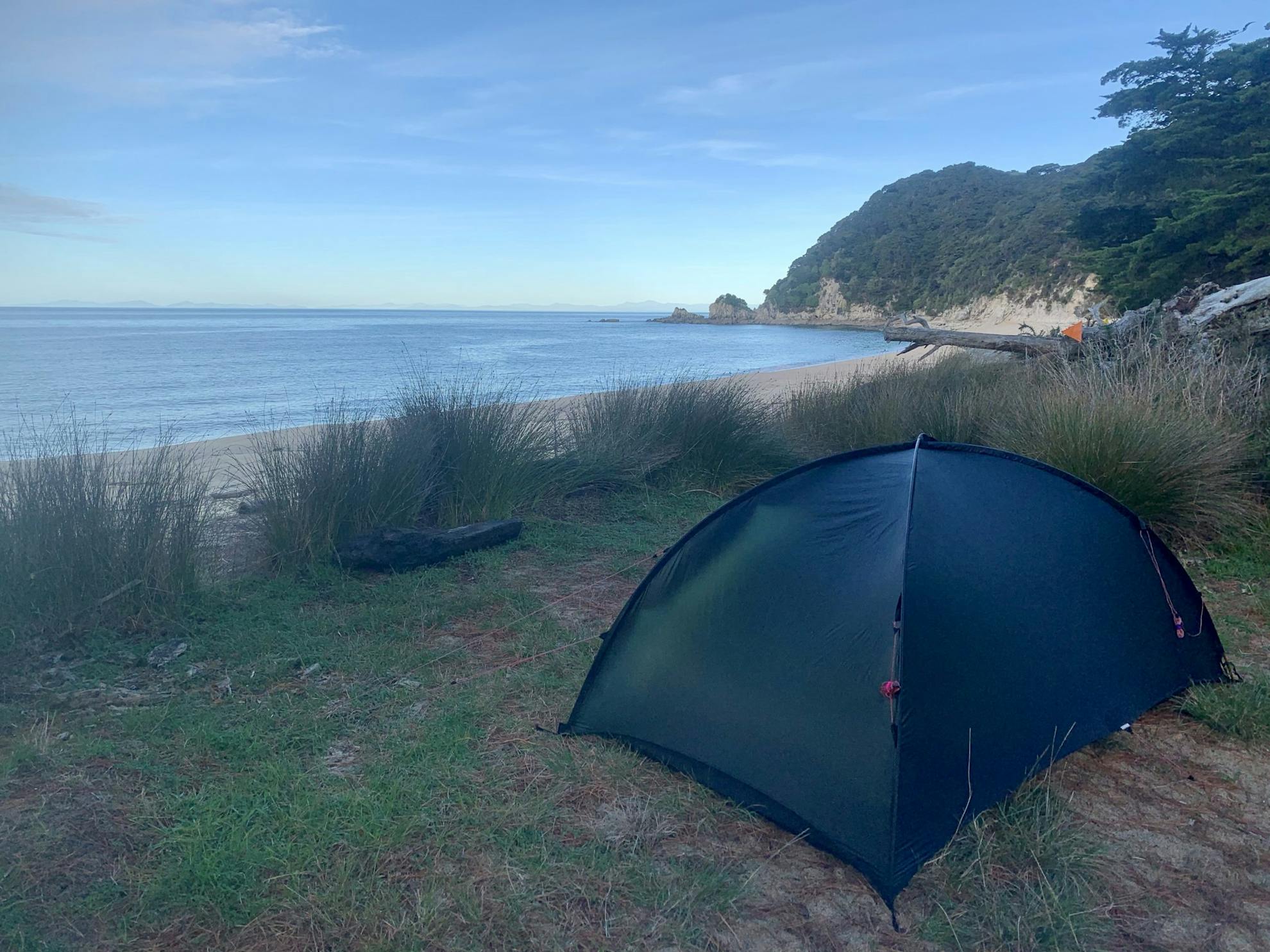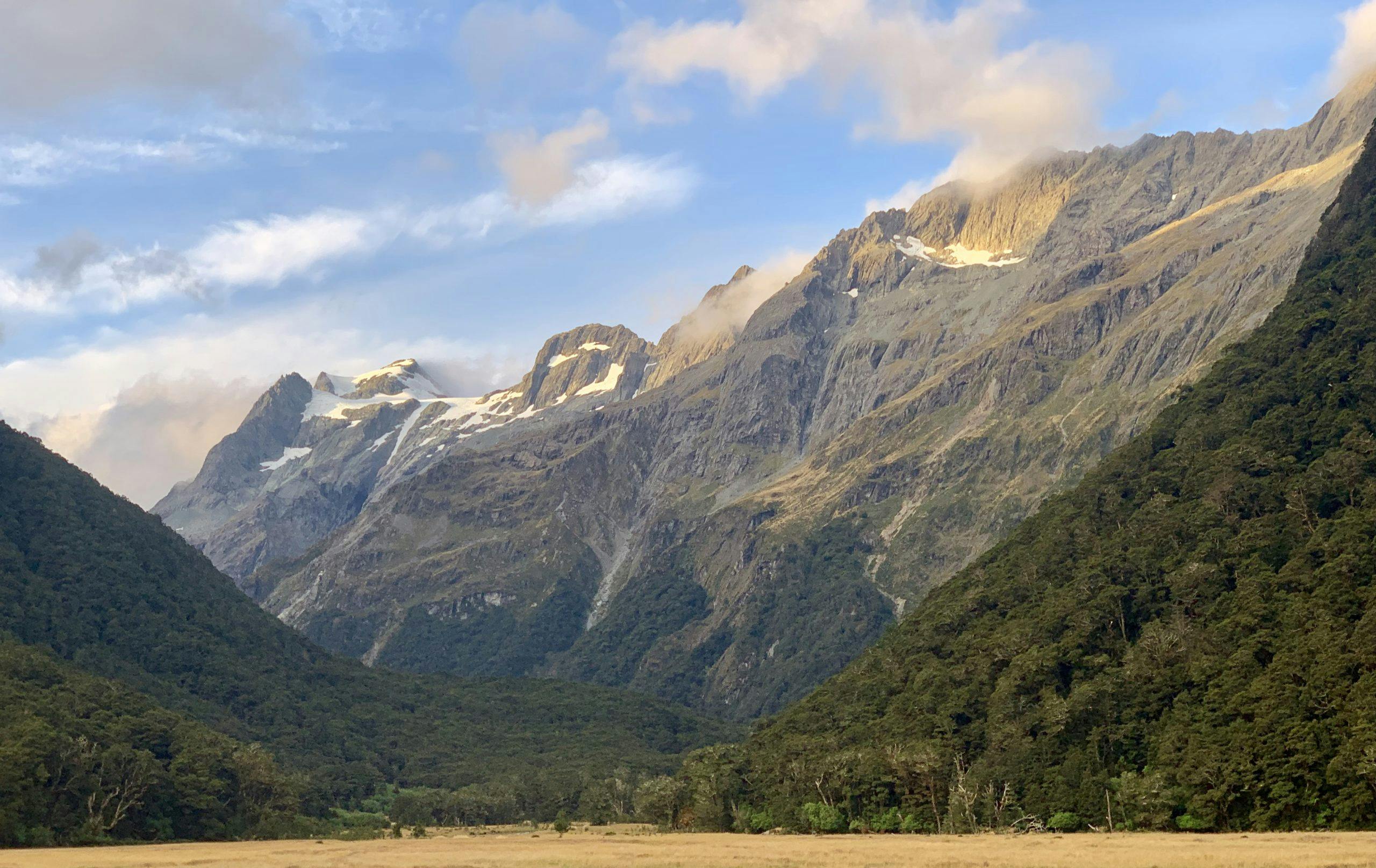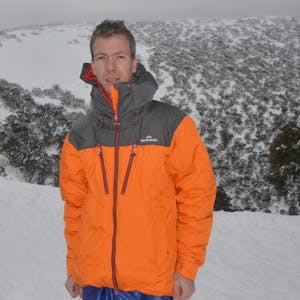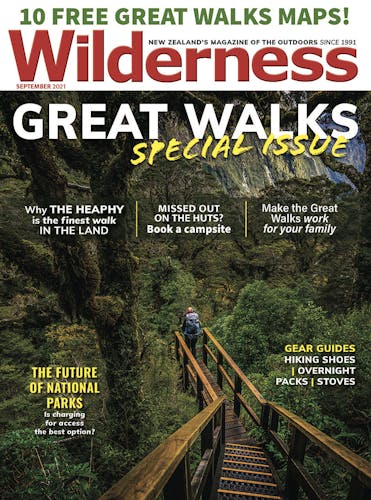Missed a bunk space in this year’s Great Walks booking frenzy? Why not pitch your tent instead, writes Ricky French
New Zealand’s network of backcountry huts is unrivalled anywhere in the world and Great Walks hut bookings are always in high demand. Some trampers, however, are choosing to forgo a hut for a tent on these walks. You might wonder why. Tents are heavy and Great Walks huts are generally large, comfortable and (usually) supplied with gas and firewood. So why would you choose to camp?
“I’m much happier camping at the best of times,” says Lyttelton tramper Pete Griffin. “I’ve had my share of crowded huts and all the associated heat and noise. If I do stay in a hut, it’s because that’s the preference of my group, and I’ll be the one dragging a mattress outside to sleep on the deck.”
Last November, Griffin and four friends mountain-biked the Heaphy Track. They started and finished at Kohaihai, getting as far as Perry Saddle before heading back, camping at Heaphy Hut, Saxon Hut and James Mackay Hut. Griffin says the wooden platforms provided for tents worked well. “When it was raining at Saxon Hut, we hung out under the eaves (of the hut) and cooked dinner there rather than try to cook inside our tents. No one seemed to mind.”
Although Griffin’s preference is for camping, for this trip it was the only option as the group had left it too late to book huts. And there you have another advantage of camping: you’ve got a much better chance of booking your preferred dates on the Great Walks.
Campsites are provided on all Great Walks except the Milford and Paparoa tracks, and there are plenty of spaces available. You can also freedom camp, but with the proviso that you do it at least 500m off the track, which effectively rules that option out in the rugged terrain of the Great Walks for all but the most intrepid trampers.

Department of Conservation’s heritage and visitors director Steve Taylor says the Great Walks have “heaps of capacity” for groups wishing to camp. “On the Abel Tasman Coast Track and Whanganui Journey there are a number of campsites located along the length of the trip that offer the opportunity to camp away from a hut,” he says.
Many people prefer camping on the Abel Tasman walk as some campsites – such as Mutton Cove – are located right beside the beach. Tramper Annelies Zwaan says she’s not one for crowds, so camping on the Abel Tasman enabled her to enjoy a Great Walk without having to deal with busy huts. “I suspect it would be a similar experience on other Great Walks,” she says.
Queenstown tramper Kristy Unahi says she and her partner always camp where possible. She says on one occasion in a hut on the Kepler Track, it got so hot and smelly they had to leave a window open all night. “We also found that everyone goes to bed really early in a hut and all wake up really early, so you end up being woken up. Being in a tent is like having your own bedroom.”
Routeburn Flats campsite on the Routeburn Track gets the big thumbs up from Aaron Dodds. Set among the meadow-like tussock of the Routeburn Valley with a backdrop of snow-capped mountains and a river outside the tent door, he says it is one of the best campsites on any Great Walk.
Queenstown tramper Jo Cross has camped on five of the Great Walks and says she’ll never forget the experience with the local keas at Iris Burn campsite on the Kepler Track.
“They loved breaking into the tents to take souvenirs like tent ties,” she says. “The ranger at the hut has kids’ toys to distract them, and if you get there early enough you can help build a new puzzle for them.
“Camping on the Heaphy, I saw a takahē. Those unexpected experiences are what I love most about camping. You’re immersed in nature and all that comes with it.”
The case for camping
Serenity. Great Walks’ huts can sometimes be crowded, hot and noisy, especially in peak season. Camping offers your own space to get closer to nature.
Flexibility. Unlike huts, Great Walks campsites rarely book out in advance, allowing more freedom to walk when you choose to.
Price. Camping is much cheaper than huts. Booking a hut space in summer on the Kepler Track will cost a New Zealand resident $68 ($110 for an international visitor), whereas a campsite is only $21. Tongariro Northern Circuit is $37 for a summer hut space versus just $12 for a campsite.
Experience. There’s something about being outside at night that makes you feel connected to the environment. You can see the stars and go to sleep when you want, without worrying about bothering anyone (or having them bother you). Animal encounters are much more likely – you could be visited by a kiwi or a kea, or hear possums scampering around (not all bush critters are welcome). But it’s always an adventure.
And the downsides
Weight. Be prepared to factor in extra kilos for your trip. Plus you’ll probably want a sleeping mat.
More weight. If it rains overnight (or you get a heavy dew), you’ll be packing up a wet tent and carrying unwanted water. Not fair.
Space. While on fine evenings you can cook outside, if it’s wet you’ll be crouched over your cooker in the tiny vestibule. Limber up.
Sandflies. They can be the bane of South Island tramping, and will be at their worst on those calm, gorgeous evenings when you want to be outside your tent watching the sunset.








